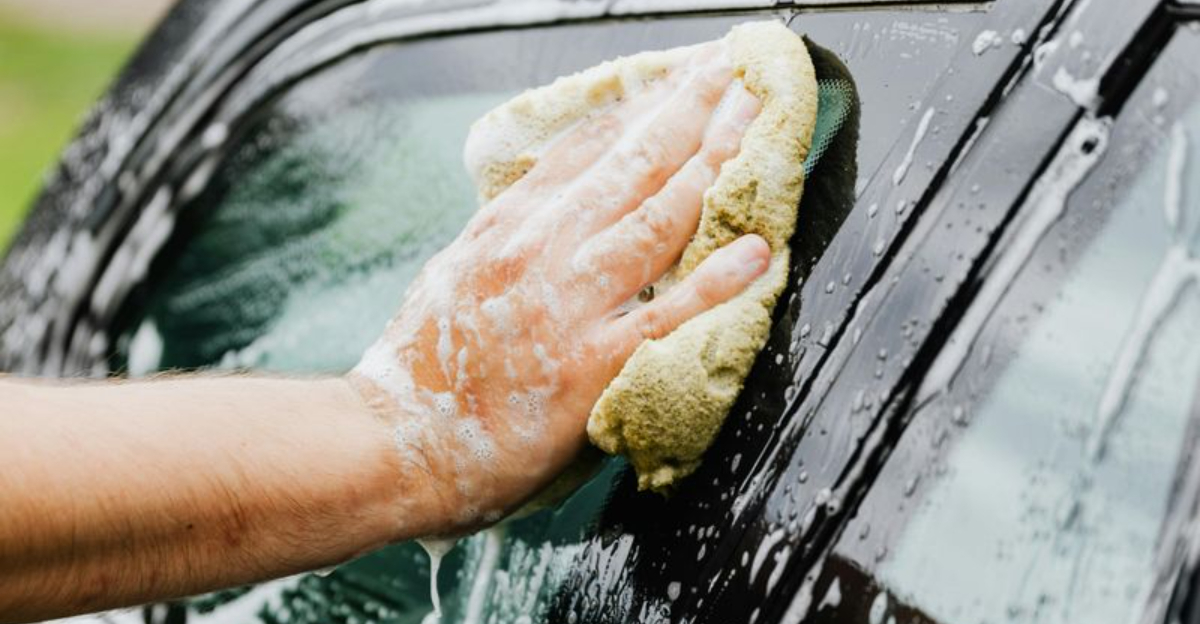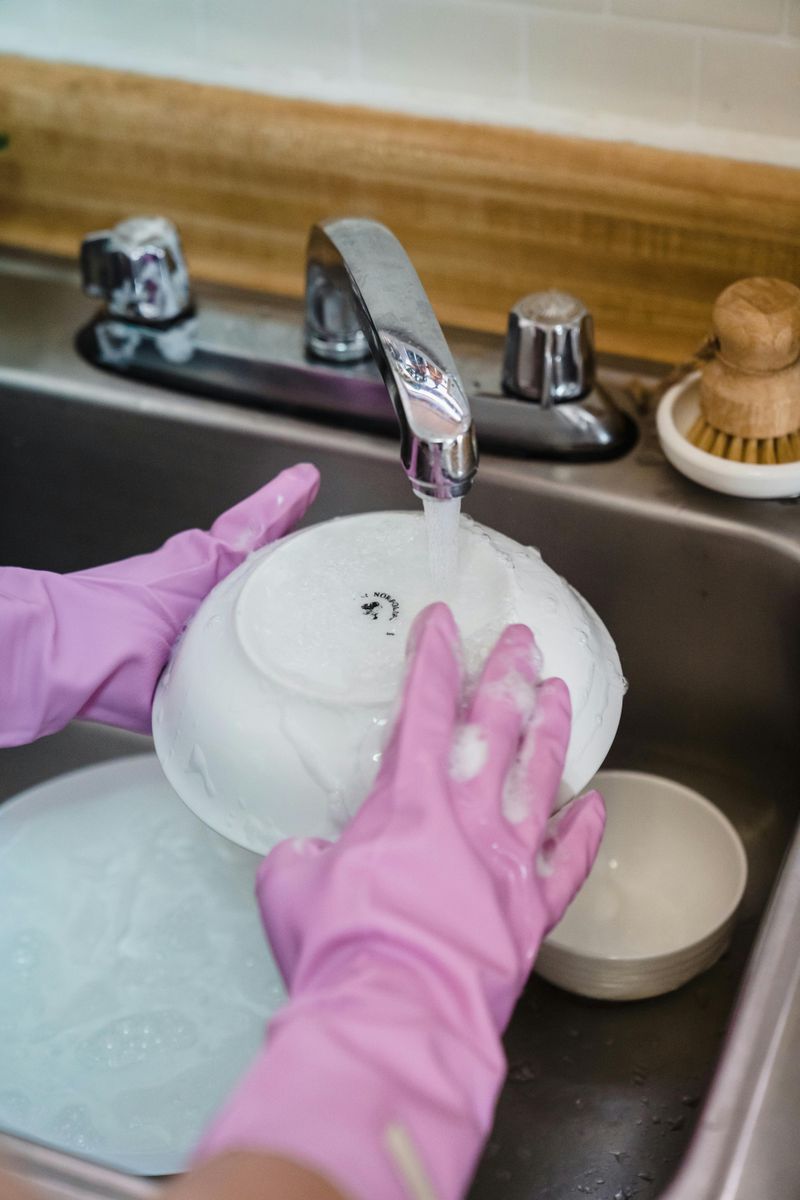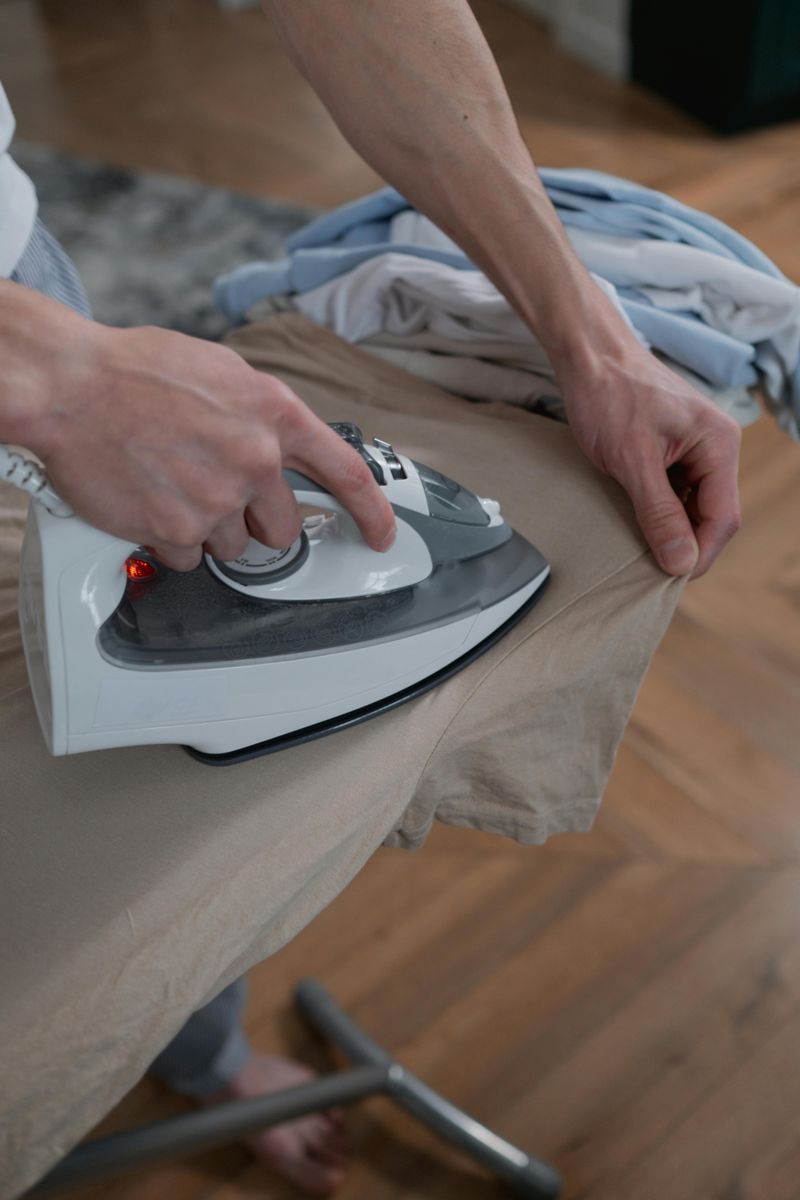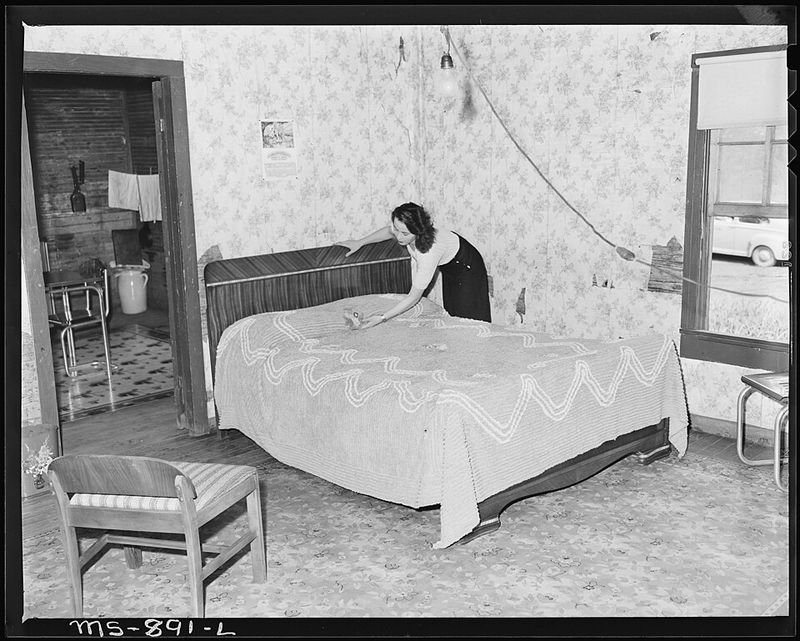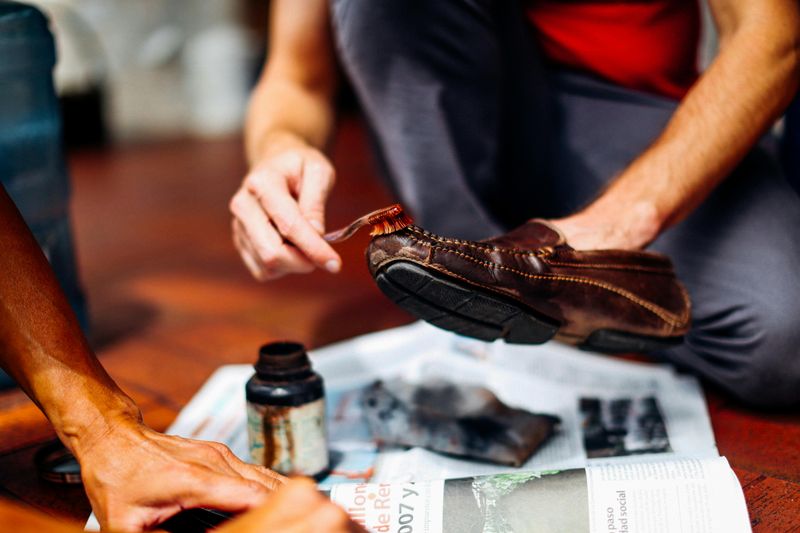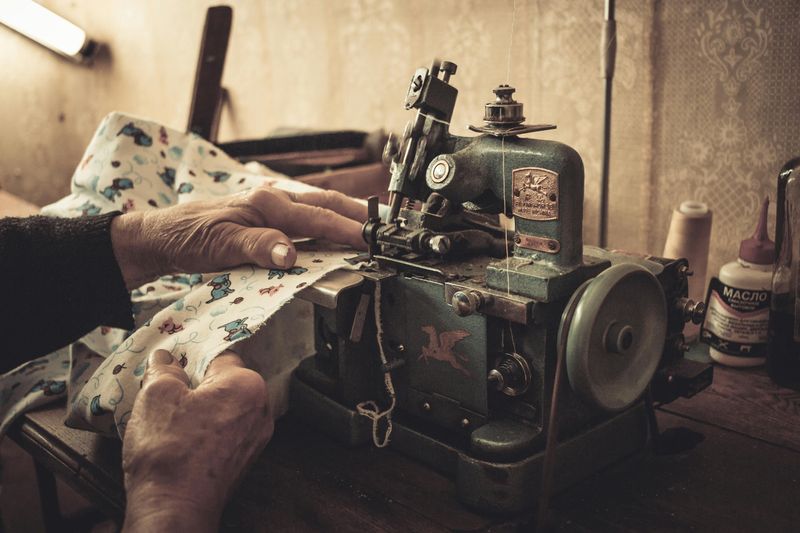Growing up in the postwar era meant different rules for housework. Baby Boomers tackled a long list of daily and weekly tasks that many of us would skip today, thanks to modern conveniences and changing attitudes. From hand-washing every dish to ironing wrinkle-prone fabrics, these chores shaped an entire generation’s work ethic and family routines.
1. Washing dishes by hand
Before dishwashers became common (only about 37% of U.S. homes had one in 1980), the nightly sink session was standard. Families gathered around the kitchen, with one person washing, another drying, and someone else putting away.
Soap suds, hot water, and elbow grease were the only tools needed. Kids learned early that pitching in was part of the deal. Nobody questioned it because everyone did it, making dishwashing a shared family ritual rather than a dreaded solo task.
2. Hanging laundry on a clothesline
Sunshine and fresh air were the original fabric softeners. Clothes dryers spread gradually, with just 10% of U.S. households owning one in the mid-1950s, so line-drying was routine to save time and money. Mothers and older children would carry heavy baskets outside, pin each piece carefully, and wait for nature to do its work.
The process took planning since rain could ruin everything. Yet the smell of sun-dried sheets became a comfort many Boomers remember fondly. It was free, eco-friendly, and gave clothes that crisp outdoor scent no dryer sheet could match.
3. Ironing (a lot)
Wrinkles were the enemy of respectability. Permanent-press fabrics didn’t take off until the 1960s and 70s; earlier cottons wrinkled easily, so shirts and trousers got regular ironing. Every Sunday evening, families would set up the ironing board and tackle the week’s wardrobe, steam hissing as creases disappeared.
School clothes, work uniforms, even bedsheets sometimes got the hot-iron treatment. Kids watched and learned, eventually taking their turn at the board. Looking polished wasn’t optional, and that meant hours spent smoothing fabric into crisp perfection.
4. Making beds with hospital corners
Sloppy bedding was simply not acceptable. Neat, taut sheets (often taught in home-ec or borrowed from military style) were a daily expectation in many homes. The technique involved tucking the sheet under the mattress at a 45-degree angle, creating sharp, envelope-like corners that stayed put all night.
Parents inspected beds like drill sergeants checking barracks. Kids practiced until they could make those corners in their sleep. The ritual taught discipline and pride in one’s space, values that stuck with Boomers long after they left home and chose their own bedding standards.
5. Weekly floor duty: sweeping, mopping, scrubbing
Saturday mornings meant one thing: floor day. With fewer labor-saving gadgets and lots of hard-surface floors, Saturday cleanups were a standing appointment. Home-ec curricula of the era explicitly covered laundering and sanitation, so everyone knew the proper technique for getting floors spotless.
Brooms, mops, and buckets of sudsy water came out like clockwork. Families moved furniture, swept every corner, and scrubbed on hands and knees when needed. The house smelled like pine cleaner and lemon wax by noon, a weekly reset that kept homes gleaming despite heavy foot traffic.
6. Mowing the lawn
Grass grew, and somebody had to cut it. Post-WWII suburbia made the manicured lawn a national symbol, meaning teens often spent weekends behind a mower. The hum of engines became the soundtrack of Saturday mornings as neighbors competed for the greenest, neatest yard on the block.
Push mowers gave way to gas-powered models, but the responsibility stayed the same. Boys especially were handed this task as a rite of passage, earning allowance and building muscle. Skipping a week meant tall grass and neighborhood judgment, so the mower came out religiously.
7. Raking leaves and shoveling snow
Seasons changed, and so did the outdoor workload. Yard work (seasonal and non-negotiable) went hand in hand with detached-house living and those wide postwar yards. Fall meant mountains of leaves to rake, bag, and haul to the curb, while winter brought endless shoveling after every snowstorm.
Kids bundled up and grabbed tools without complaint. Leaf piles became play spaces before cleanup, and shoveled driveways were badges of responsibility. Neighbors helped each other, turning hard labor into community bonding. Nobody hired services because doing it yourself was simply what homeowners did.
8. Taking out the trash—sometimes burning it
Garbage didn’t just disappear into bins. In many cities, families used backyard incinerators until local bans arrived; Los Angeles outlawed residential burning in 1957 to fight smog. Before that, burning trash was a regular chore, with metal barrels smoldering in yards across America.
Kids hauled bags outside and watched flames consume paper, food scraps, and packaging. The acrid smell was just part of life. Once bans took effect, curbside pickup became standard, but the routine of managing household waste remained a daily responsibility that everyone shared without question or debate.
9. Returning milk bottles and grabbing deliveries
Fresh milk arrived at your door, not the store. Home milk delivery persisted well into the 1960s (about 30% of milk was still delivered then) before supermarkets and fridges ended the daily doorstep drop-off. Families left empty glass bottles on the porch, and the milkman swapped them for full ones before sunrise.
Kids raced to bring in the cold bottles before school. The system was efficient, eco-friendly, and built on trust. Missing a pickup meant no milk for breakfast, so keeping up with the routine was essential for smooth household operations.
10. Washing the family car in the driveway
Car ownership soared in the suburban boom, and keeping the family ride clean was a weekend ritual. With car ownership soaring in the suburban boom, weekend bucket-and-sponge washes were common teen chores. Driveways became wash bays, with hoses, soap, and plenty of scrubbing turning dirty sedans into shiny showpieces.
Teens earned allowance or just took pride in a job well done. Water fights broke out, making the task fun rather than tedious. Automatic car washes existed but seemed wasteful when elbow grease was free and effective.
11. Polishing leather shoes
Scuffed shoes meant sloppy appearance. Dress codes at work and school meant leather shoes, and keeping them shined, were part of regular upkeep (shoe-polish brands like Kiwi dominated for decades). Sunday nights often included a shoe-shining session, with tins of polish, brushes, and rags spread across newspaper.
Kids learned to buff until they could see their reflection. Dull leather was unacceptable for church, school, or any public outing. The ritual taught attention to detail and respect for belongings, values that extended far beyond footwear into every area of life.
12. Clipping coupons and keeping a price list
Saving money took effort and organization. By the mid-1970s, roughly two-thirds of U.S. households clipped coupons; Sunday inserts and grocery deals were a household task. Mothers (and sometimes kids) would sit with scissors, carefully cutting deals for cereal, soap, and canned goods, then filing them in envelopes or organizers.
Price lists helped track which store offered the best bargains. Shopping trips were strategic missions, not quick errands. The practice saved real money and taught budgeting skills, making coupon clipping a valued skill rather than a tedious obligation.
13. Basic sewing and mending
Ripped clothes got fixed, not tossed. Home-ec’s heyday meant many kids learned to sew on buttons, darn socks, or hem pants as a routine expectation. Sewing kits lived in every household, and knowing how to thread a needle was as basic as tying shoes.
Clothes were investments, so extending their life made economic sense. Kids practiced stitches until they could mend tears invisibly. The skill fostered self-reliance and thriftiness, qualities that defined the Boomer generation and set them apart from the disposable culture that followed decades later.
14. Emptying ashtrays (yes, really)
Smoking was everywhere, and ashtrays filled up fast. With about 40% or more of adults smoking in 1965, ashtrays were everywhere, and someone had to clean them. Living rooms, kitchens, even bedrooms had glass or ceramic dishes collecting butts and ash, and kids were often assigned the unpleasant job of emptying them.
The smell clung to everything, but nobody complained. It was just another household task in an era when smoking was normal, even glamorous. Clearing ashtrays taught responsibility, even if it meant handling stinky remnants of a habit we now know was harmful.
